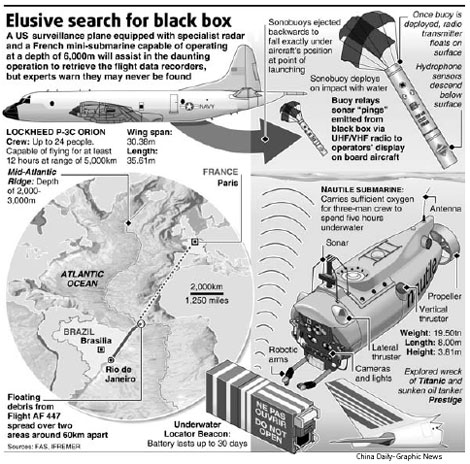
|
WORLD> America
 |
|
GPS better than radar systems to track aircraft
(China Daily)
Updated: 2009-06-05 09:28 CHICAGO: Get lost in the woods and a cell phone in your pocket can help camping buddies find you. Drive into a ditch and GPS in your car lets emergency crews pinpoint the crash site. But when a transcontinental flight is above the middle of the ocean, no one on the ground can see exactly where it is - in the air, or worse, in the water. 
"The technology's there - we've had this stuff for 15 years and little has happened," said Michael Boyd, a Colorado-based airline analyst. "My BlackBerry can be used to track me, so why can't we do it with planes?" US officials have discussed setting up such a network since the 1990s and the technology is being tested in parts of the country, including Alaska and off the Gulf Coast. A few carriers, like Southwest, already use GPS to help planes make quicker landings that burn less fuel. But full implementation, estimated at a cost of $35 billion, has languished amid funding delays and disputes over technical complexities. Although Transportation Secretary Ray LaHood has said the project will be among the Federal Aviation Administration's top priorities in the Obama administration, the existing radar system is likely to remain for at least another decade. "It's a crude system they're using now," said Robert Poole, an aviation expert with the free market-oriented Reason Foundation. "For 100 dollars, you can run down and buy a GPS system, put it in your car and know exactly where you are. But planes don't have it." Current air traffic systems do not allow controllers to see a transoceanic plane on radar until it is within about 320 km of land. Instead, controllers often estimate a plane's location based on flight plans and departure times. Such imprecision leaves planes vulnerable in emergencies, such as water landings, Boyd said. "If a plane ditches and there are survivors, you may not be able to get to it fast enough," he said. "And if an airplane was hijacked in the middle of the Atlantic Ocean, we wouldn't know until it pops up somewhere else." AP |